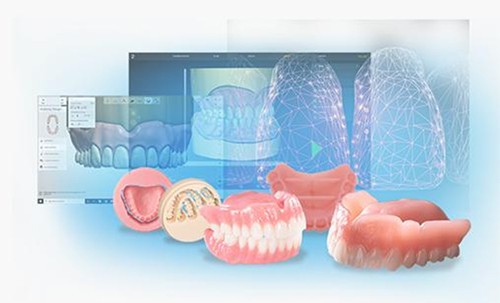Products
There are two types of implant attachment on the dental market.
Ball abutments: generally 1.8, 2.25 mm and 2.5 mm in diameter
LOCATOR or OT EQUATOR profiles
Each has its advantages and disadvantages, but they all have the same goal: to stabilize an implant-supported prosthesis.
The ball pillar will be adapted to cases of strong divergences or the search for resilience.
LOCATOR-type abutments: ease of insertion, chairside application, retention strength
For all of them, however, you need to have the same ordering reflex:
Know implant brand, range, diameter and gingival height
Measuring gingival height before purchasing an implant attachment is very important.
It will only be effective if it emerges from the gums and does not injure the patient when the prosthesis is inserted.
The technique is simple:
Using a parondental probe, take the implant neck to the emergent gingiva + 1 mm
We also sell phantom pillars for testing purposes.
No, some have opted for a different type of implant attachment. Some brands may be compatible with each other, but only the brands themselves can certify this.
A 3-in-1 tool or screwdriver is used for attachment. Shafts are either triangular or square. Abutments are screwed in at 25 Ncm with a torque wrench or counter-angle.
The classic Locator does not include the prosthetic part. However, the prosthetic kit is included with the Locator RTX, the OT EQUATOR and the ball abutment.
New-generation attachments can compensate for angles of up to 40° or more. Example: Locator RTX or OT Equator Smart Box
All these products are not LOCATOR or OT EQUATOR. Any combination of prosthetic parts not referenced by ZEST or RHEIN83 will not be covered by the manufacturer's warranty.
The patient must properly clean the central concavity of the attachment with a spray or brush. Never insert the denture into the antagonist's teeth. Do not leave the prosthesis in a cleaning solution for too long, as the acidity of the product deforms the female parts. Remember to check that the abutment is properly screwed in, and to replace the retention sleeves regularly.
Our 45 years' experience in dental attachments has led us to understand why retention sleeves and abutments wear out prematurely.
For clinical reasons, implants cannot be placed in parallel, so retention sleeves are required to compensate for this discrepancy.
We believe that the stresses on the abutment or sleeves are too great. What's more, the axis of insertion of the prosthesis by the patient is never that defined by the dental technician. Dentures are rarely inserted by hand. Very often, it's the antagonist's teeth that insert the prosthesis.
It is therefore necessary to make the implants parallel by means of an indexable angled abutment, and also to facilitate the insertion axis of the prosthesis.



